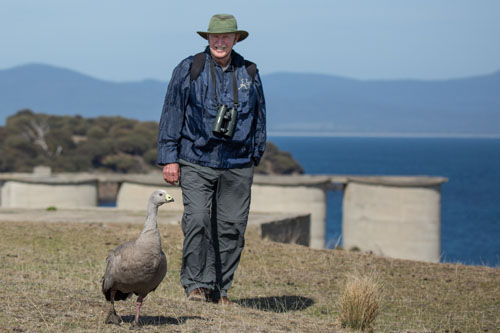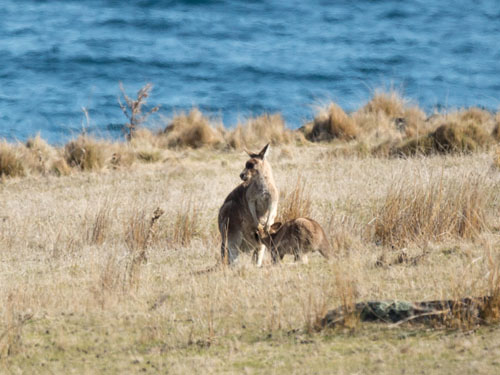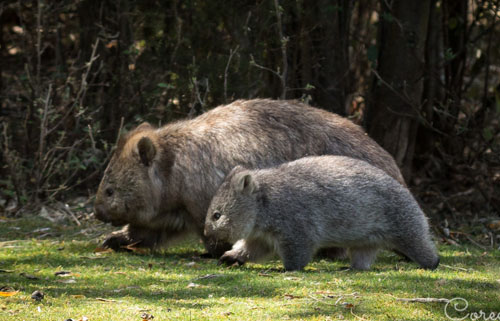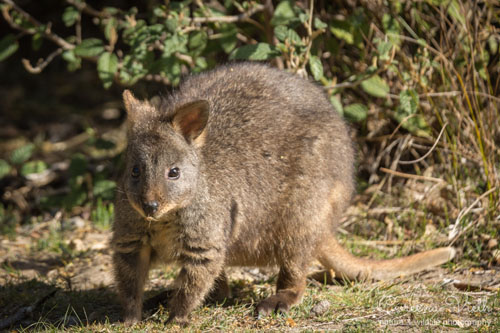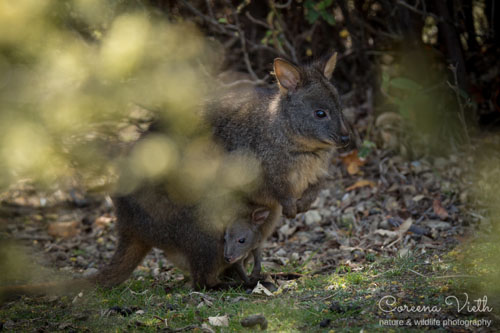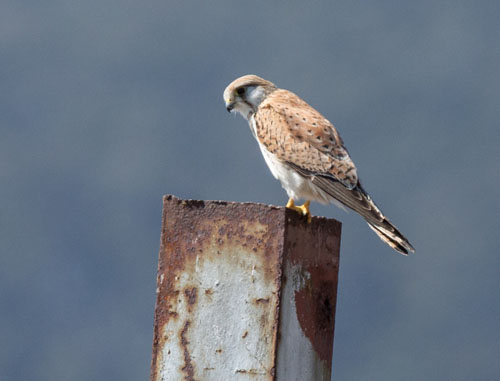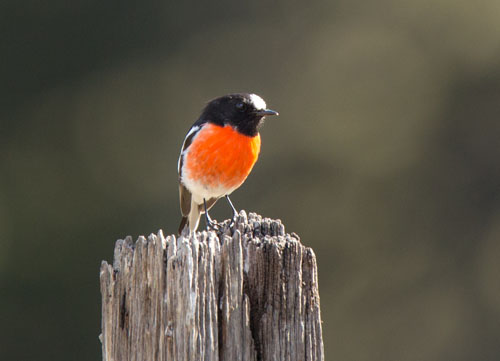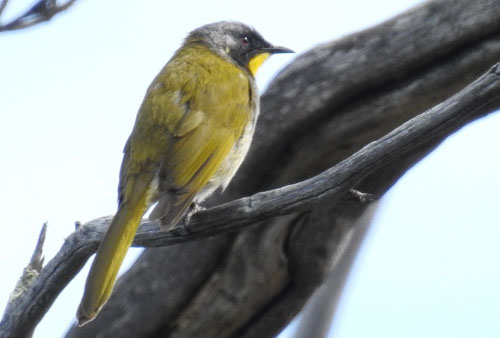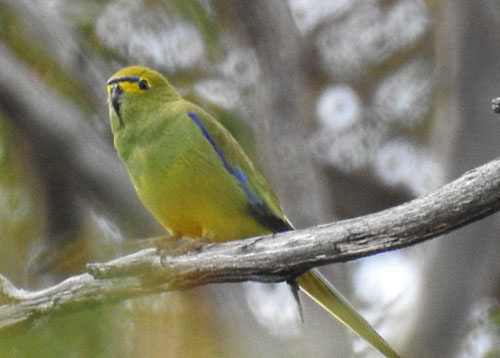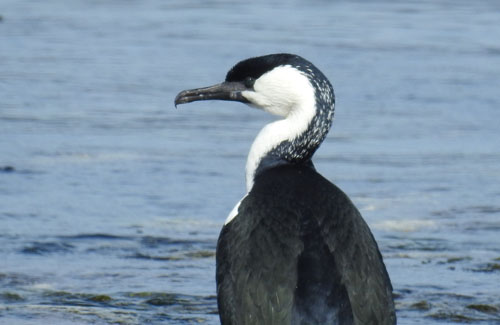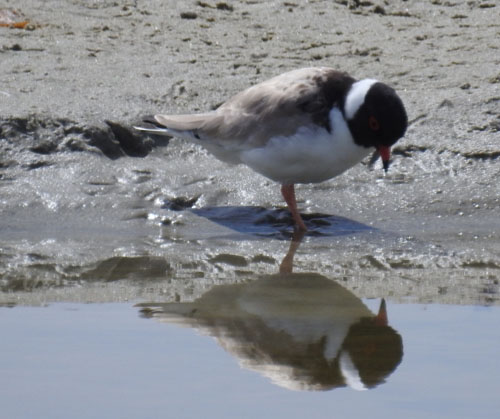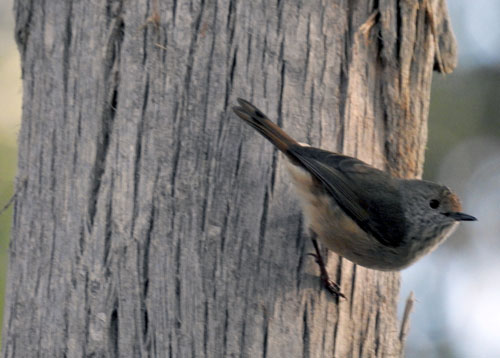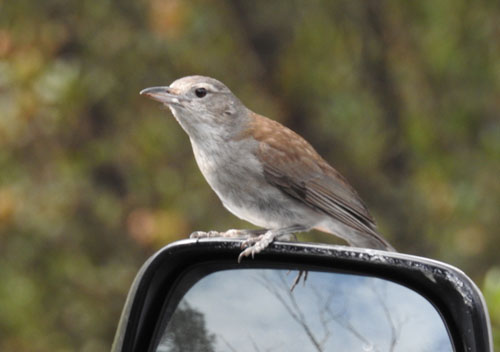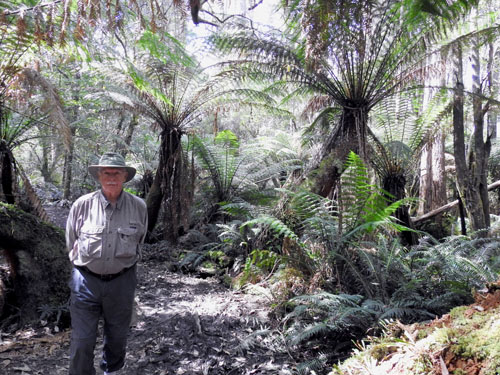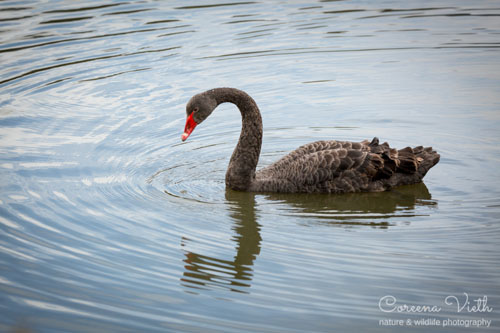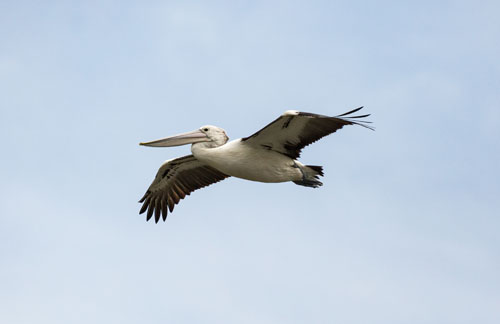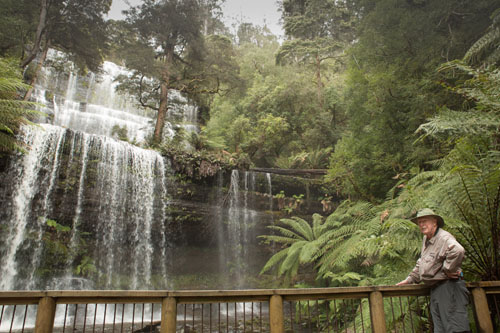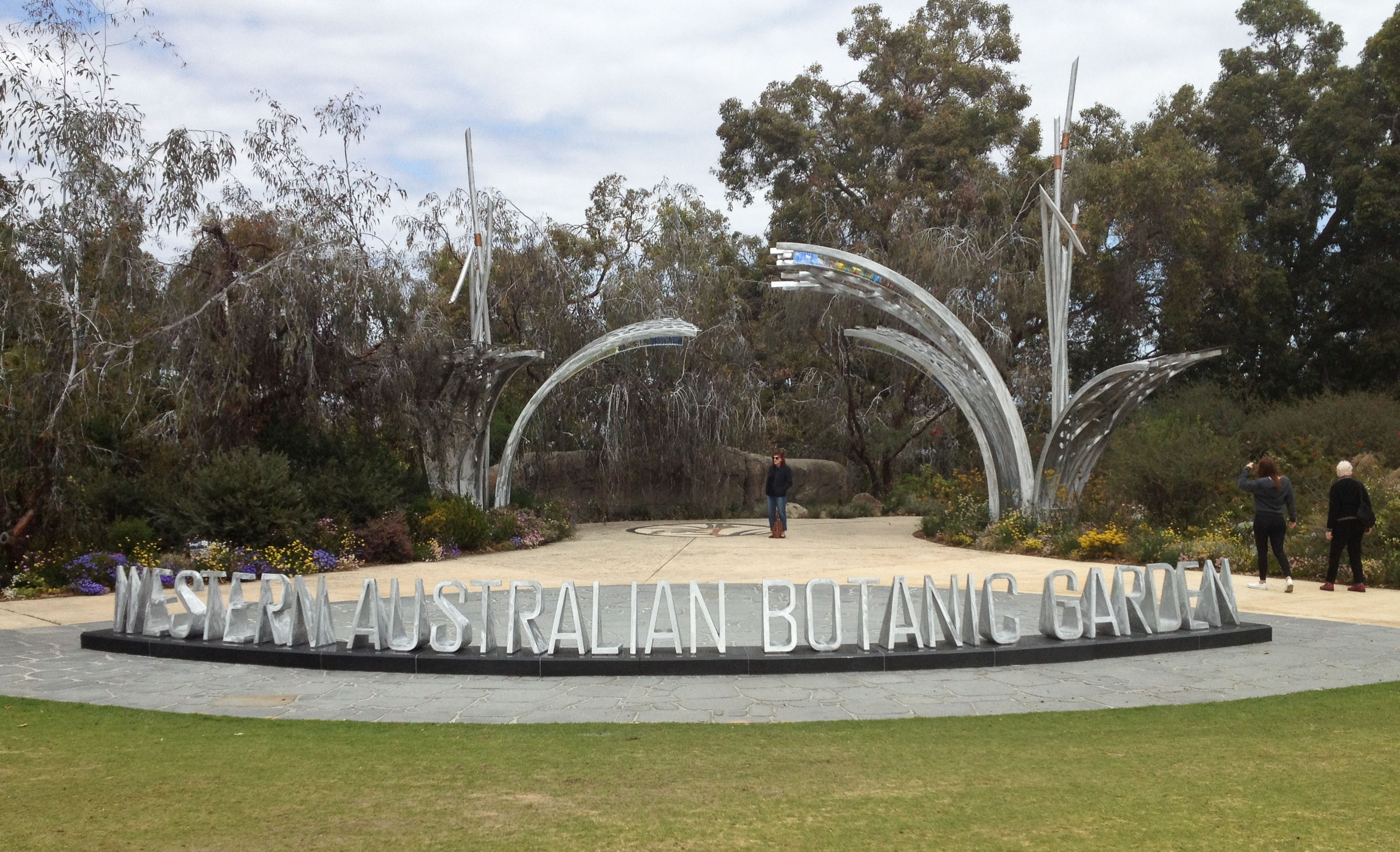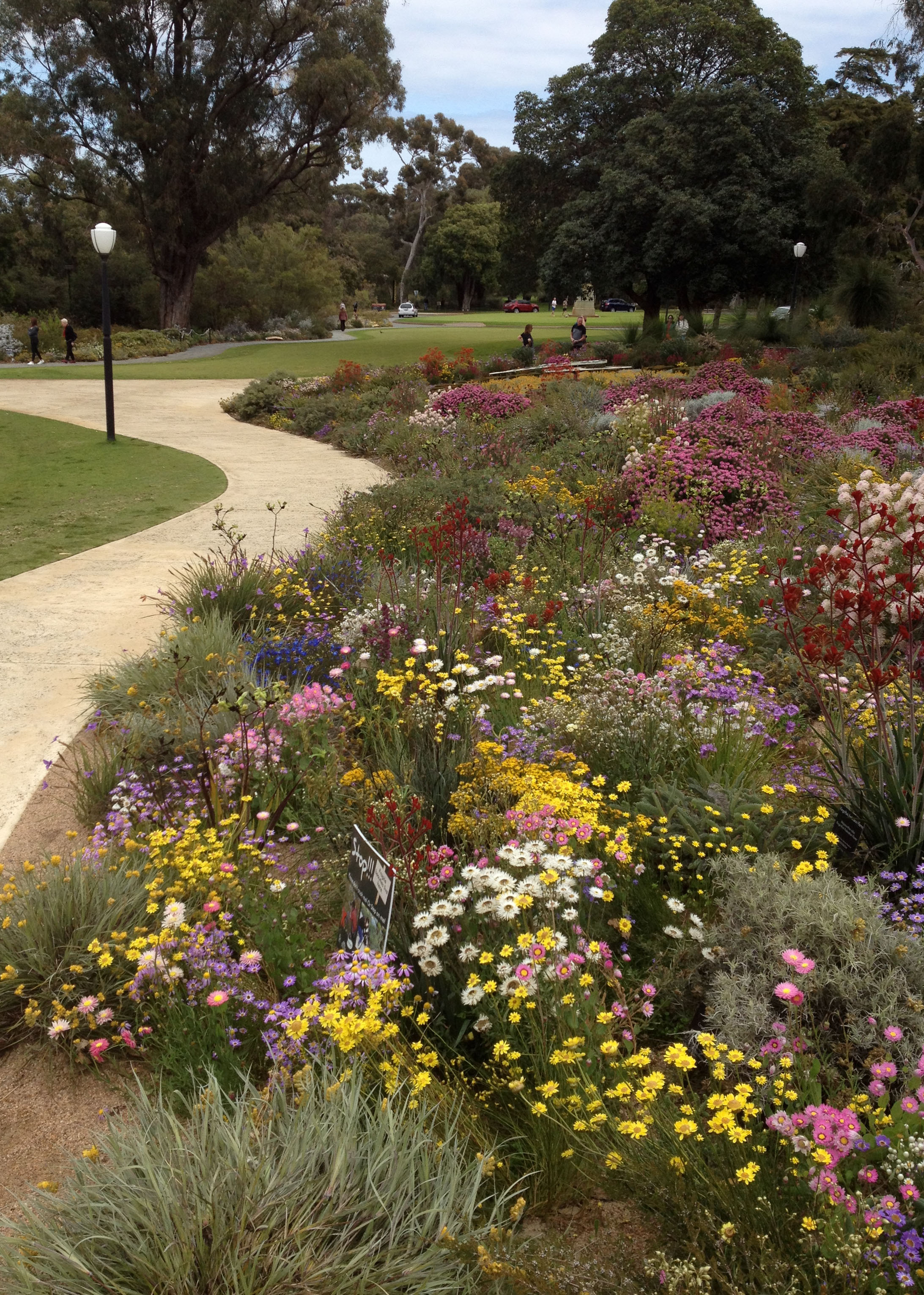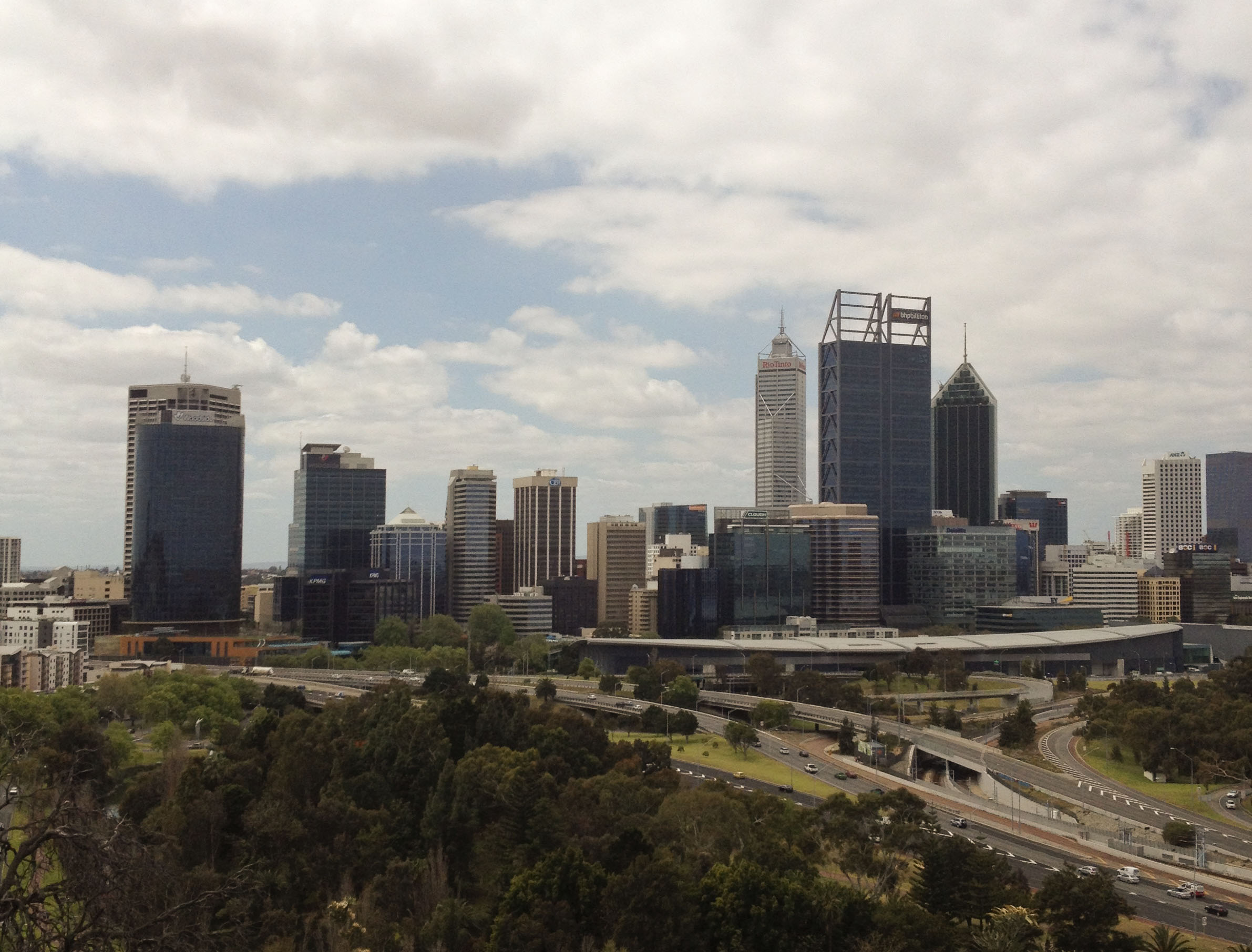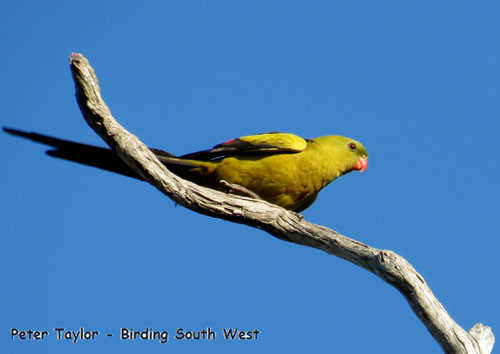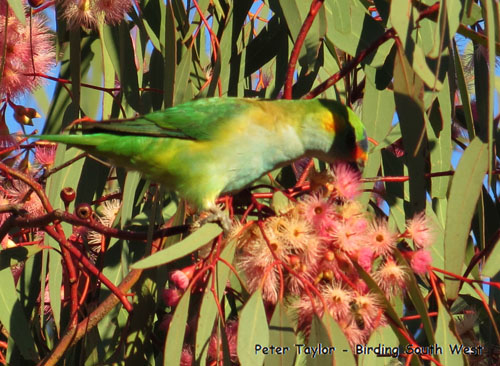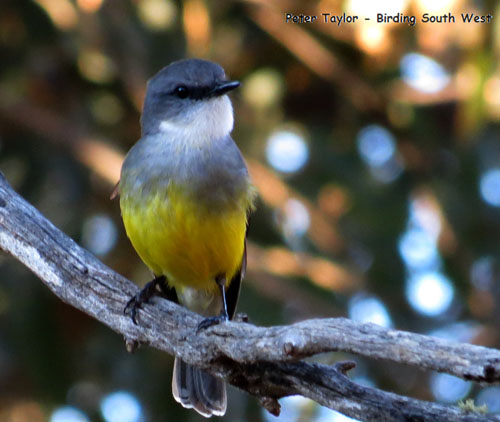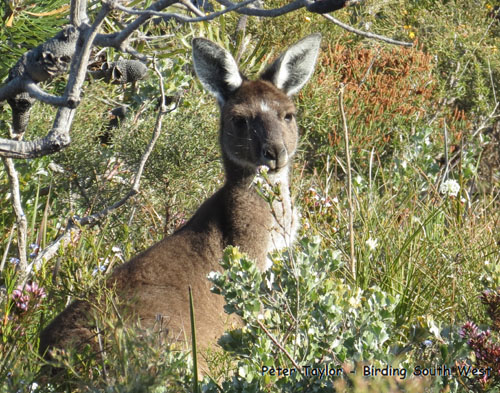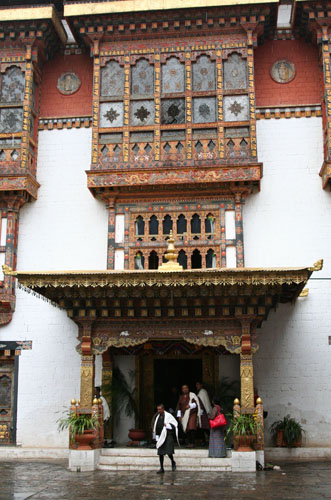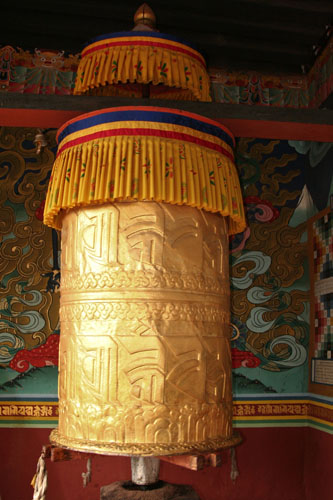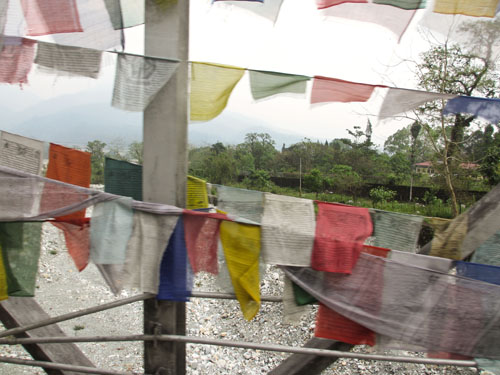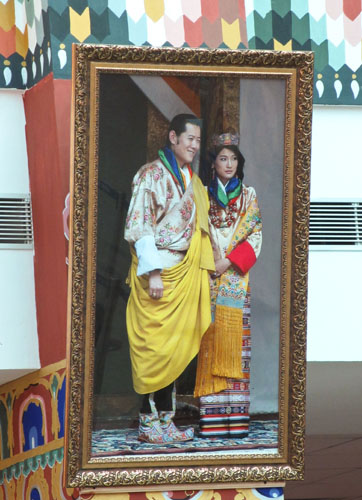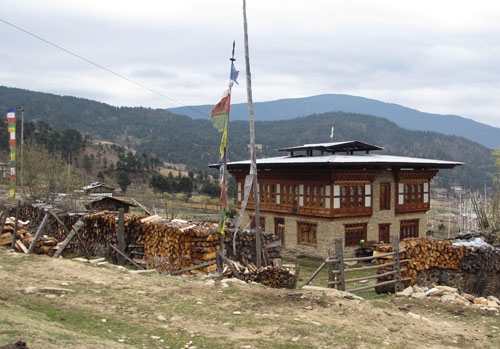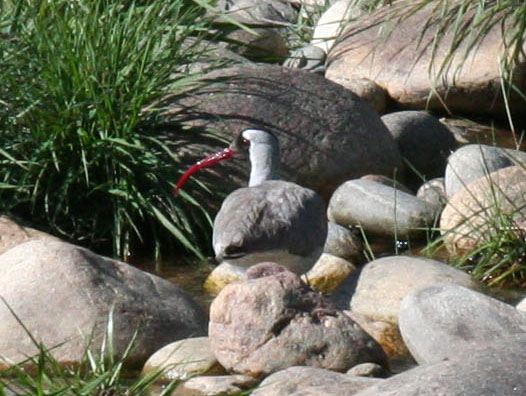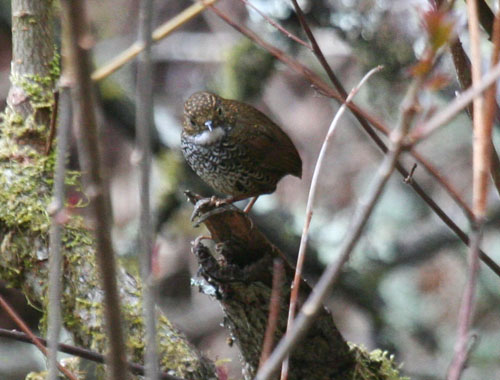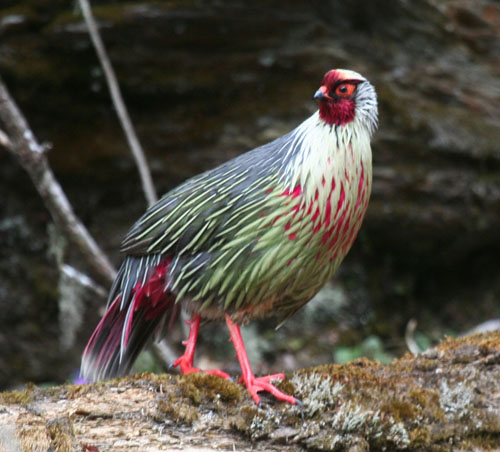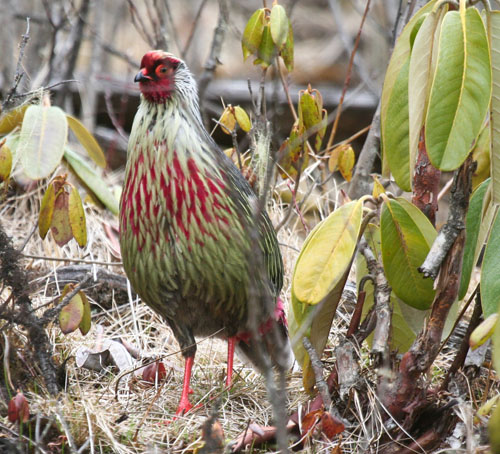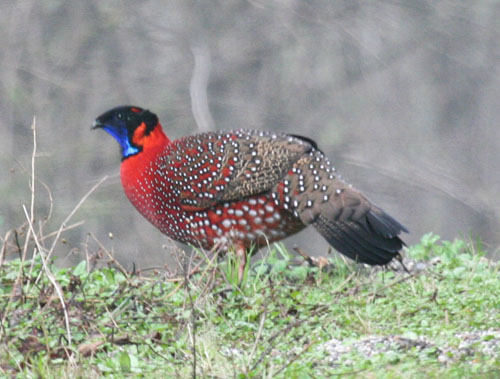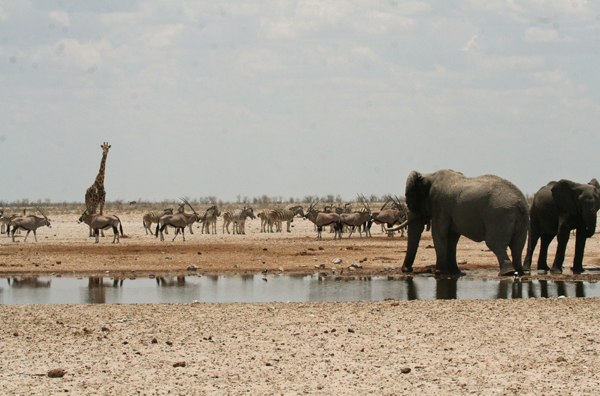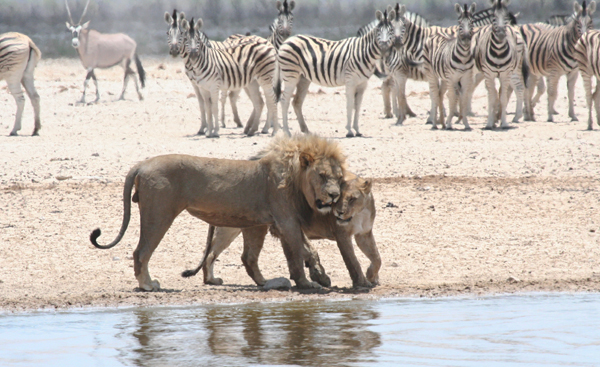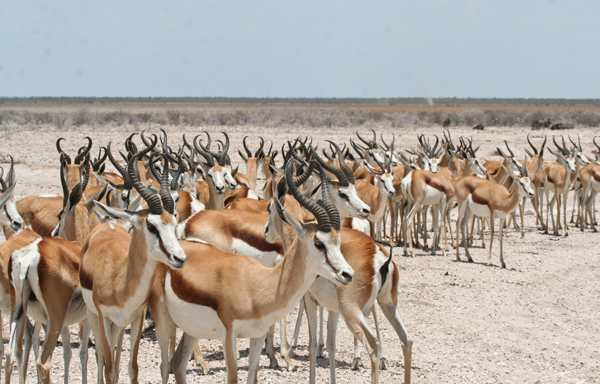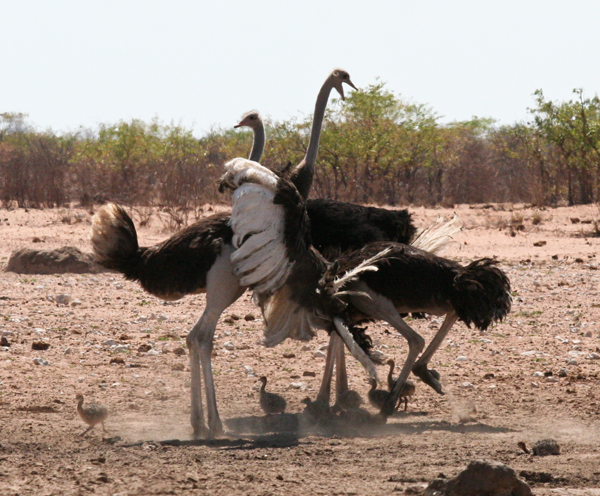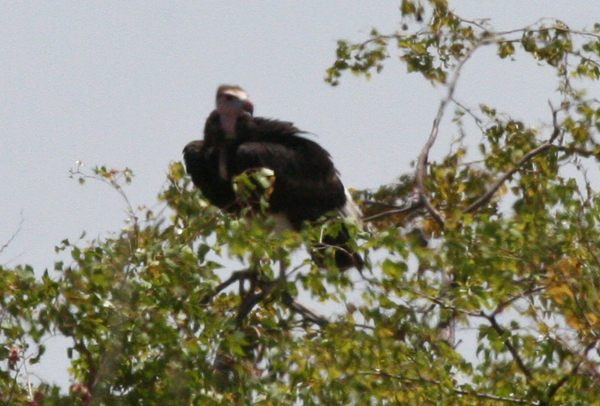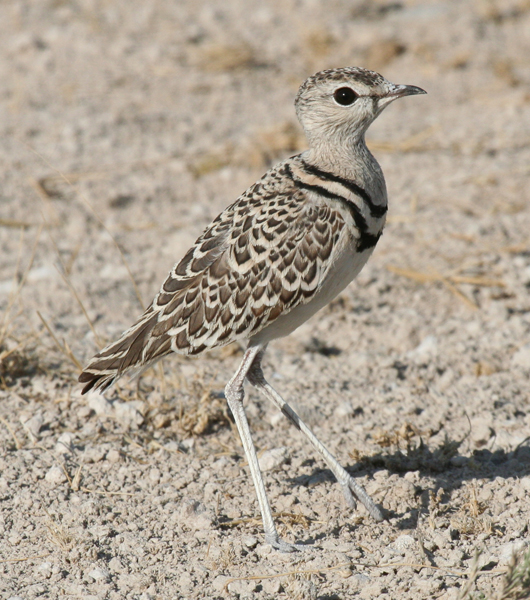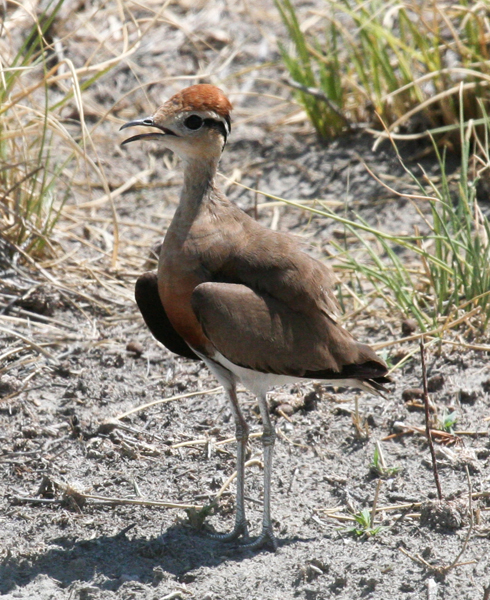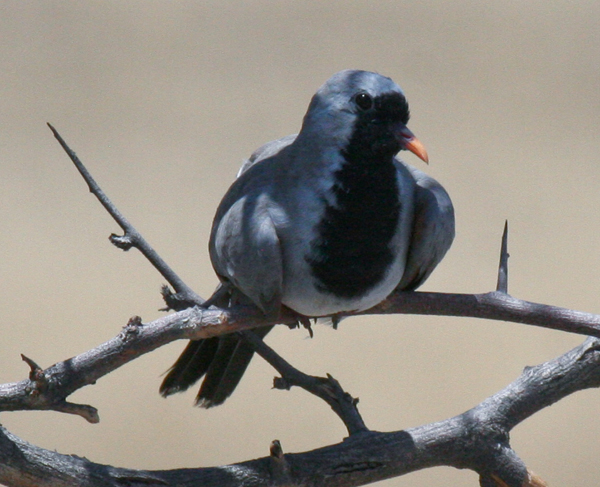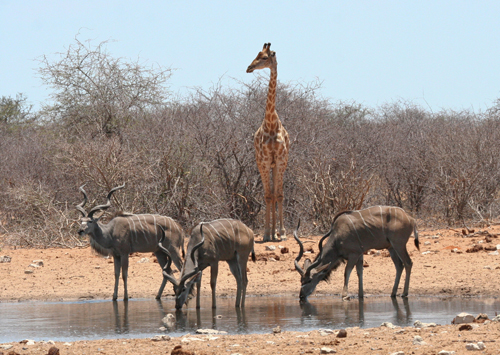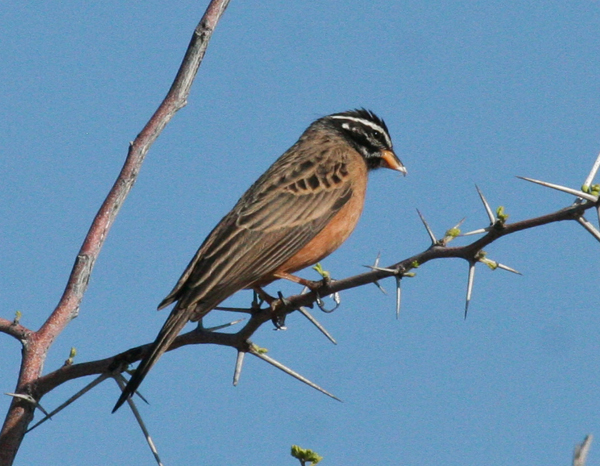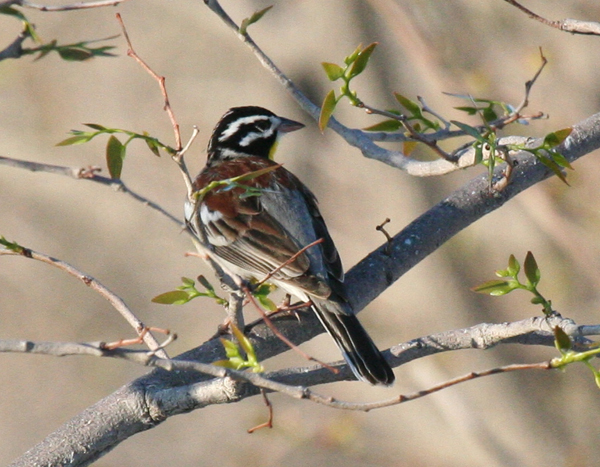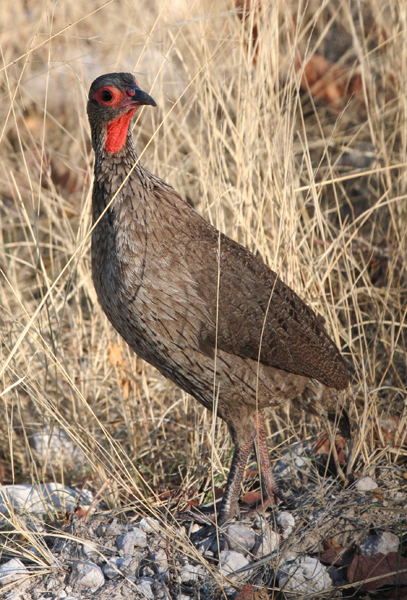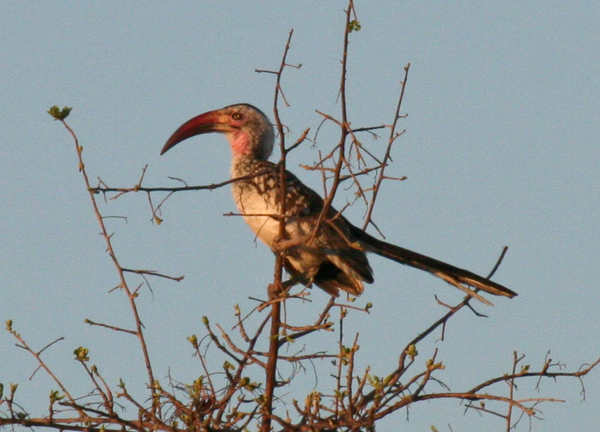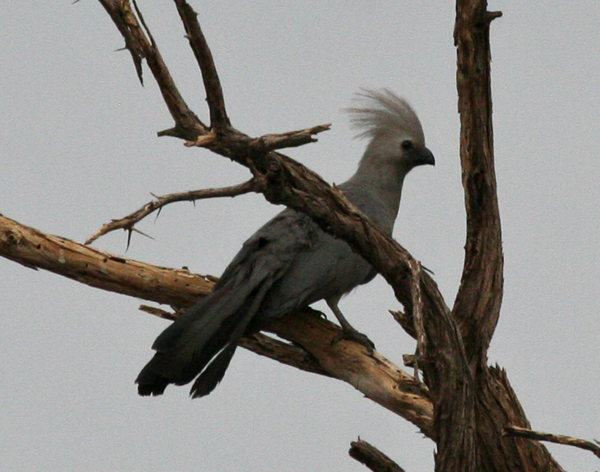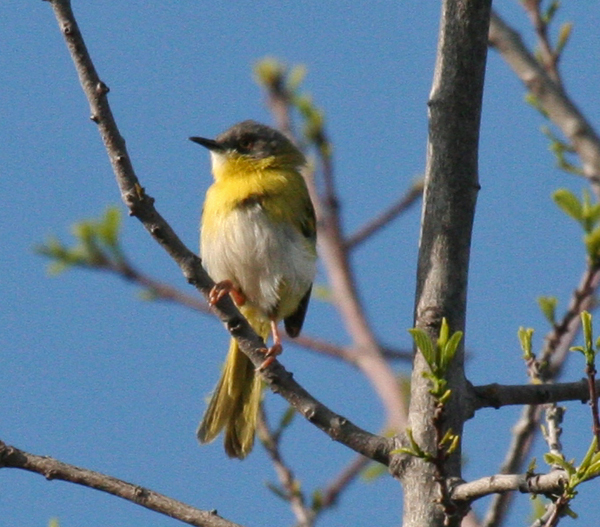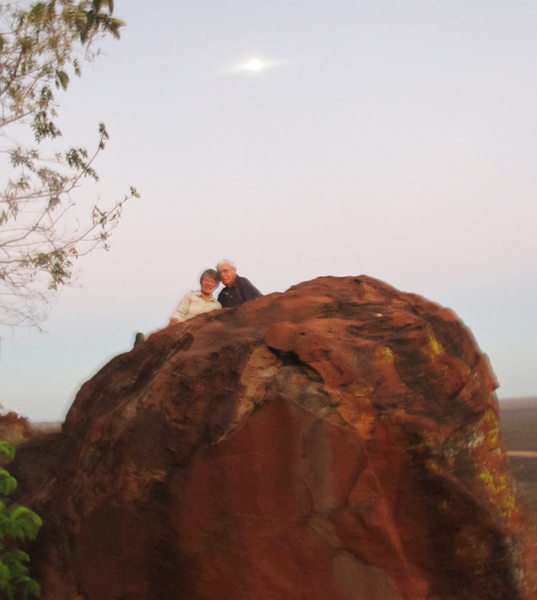If there were no Plains Wanderers in Australia, I would not have made this trip. This strange little bird, the only species within its family (Pedionomidae), is critically endangered. Birdlife International reports that there are less than 1,000 remaining. They live in grasslands in various, widely separated pockets of southeastern Australia. As agricultural acreage has expanded, the habitat for the Plains Wanders has nearly disappeared. To add to their woes, introduced foxes prey on these little ground-nesters, who are also poor fliers, who escape from predators, if at all, by running.
If the Plains Wanderer is not to become extinct, substantial credit for its survival needs to be awarded to Philip Maher of Australian Ornithological Services, who conducts the Plains Wanderer weekends several times a year. He has spent years studying the Plains Wanderer near Deniliquin, in the Murray River Valley of New South Wales. Along with his own work on habitat restoration, he has enlisted the support of some local ranchers who have made adjustments to their practices to maintain habitat. One of these, Robert Nevinson, served as a co-guide on Philip’s Plains Wanderer Weekend. They are a good team, and the results of this intensive 2 days of birding were impressive. I, and I am quite sure I can speak for the other 7 guest-participants, could not have hoped for a more interesting and productive week-end of birding than Philip and Robert guided. Although the Plains Wanderer was the highlight, we saw many other Murray River Valley birds on this intensive week end of birding.
One of the trip participants was Peter Bundgard from Denmark, an avid photographer, who has graciously provided the pictures contained in this blog and allowed me to use them here. To go right to the point, here are his pictures of the male Plains Wanderer

And the larger and more colorful female Plains Wanderer,
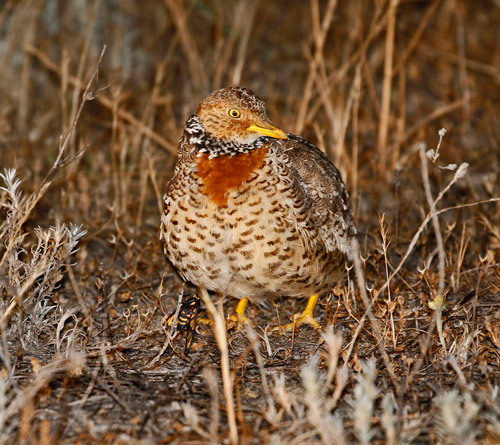
Very difficult to spot in daylight, we spent a most interesting night, primarily on Robert’s ranch, looking for and finally spotting this pair. They proved to be most cooperative, taking little notice of us as we sat in our vehicles nearby, and Peter photographed to his heart’s content. These birds are unusual: the male incubates the eggs and raises the young; the female, after laying her eggs and occupying her mate with hatching the eggs and raising the kids, seeks another male companion and reproduces again. In good years, she can produce several broods through this efficient arrangement.
Also seen on the night drive were:
Banded Lapwings,
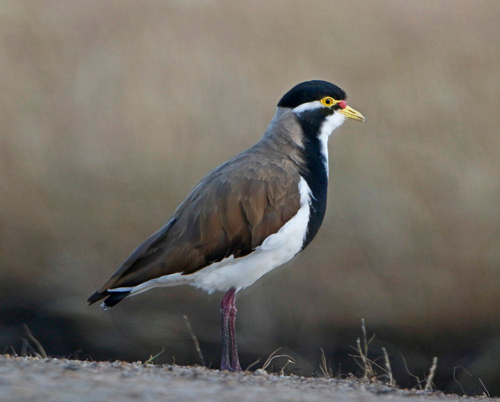
Inland Dotterl,

Barn Owl
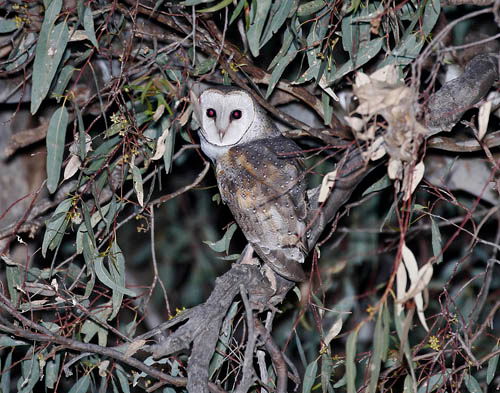
To add to this impressive list of grassland birds, we were treated to decent, if short, looks at Little Buttonquails and Stubble Quail. Arriving back at our hotel around midnight we battened down for a short night’s rest, as the next morning our birding weekend was to continue.
To backtrack a bit, our weekend of birding began at 6:30 a.m. Saturday morning, recessed for a brief rest between 1:00 p.m. and 3:00 p.m., and continued with our night birding excursion beginning about 3:00 p.m. and ending at midnight. Philip and Robert picked us up again about 7:00 a.m. Sunday morning and we birded until they delivered me to the Denilquin bus station about 1:45 p.m.
Among the birds photographed by Peter during these two days were:
Baillon’s Crake
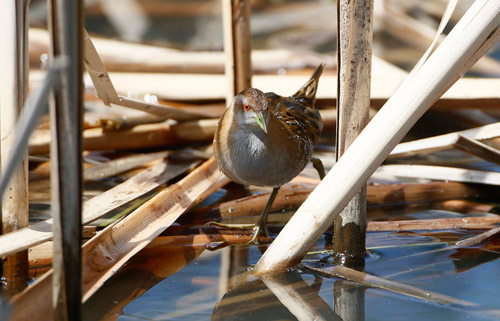
Royal Spoonbill
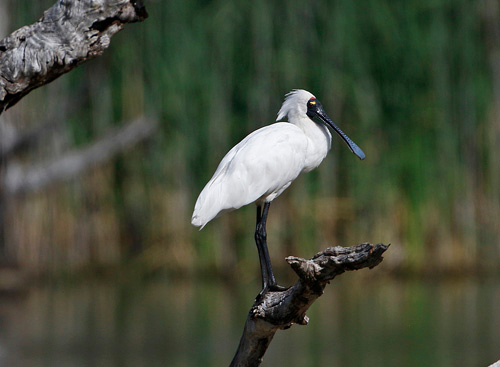
Black Honeyeater
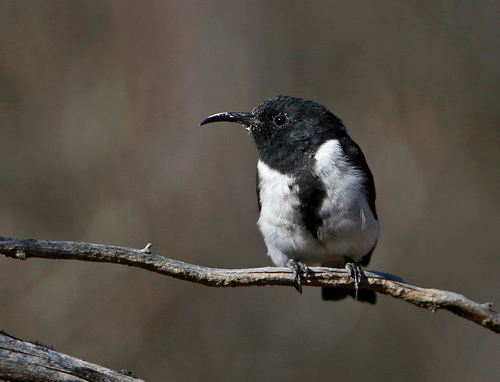
Crested Shrike-tit (Eastern Subspecies)
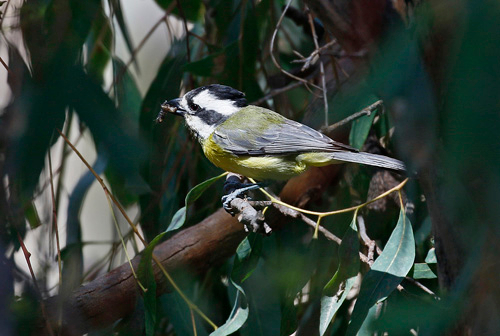
Emus
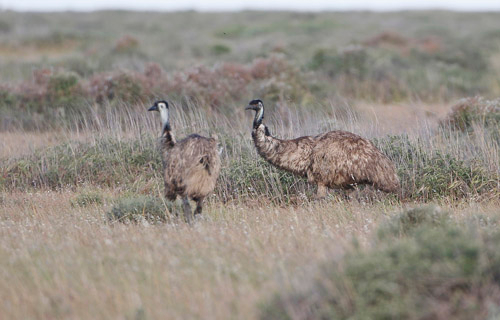
Rainbow Bee-eater
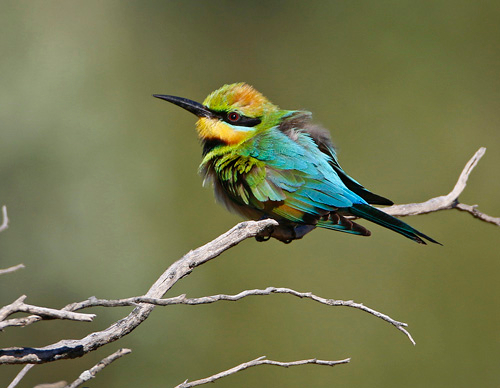
Superb Parrot (New)
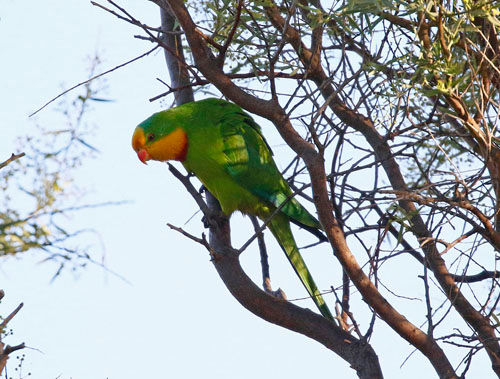
Square-tailed Kite

White-fronted Honeyeater
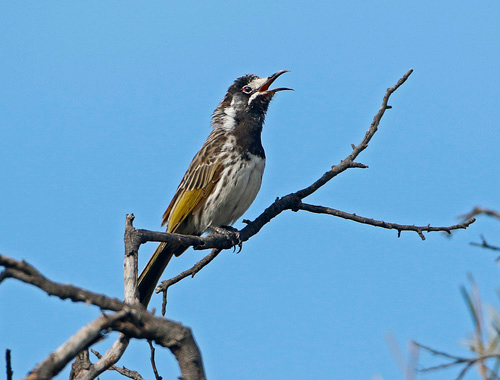
and Yellow-billed Spoonbill
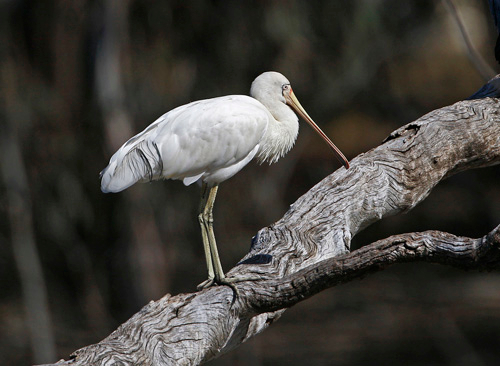
Other new species seen on this weekend were: Spotted Harrier, Collared Sparrowhawk, Black Falcon, Australian Spotted Crake, Long-billed Corellas (plentiful around our hotel), Yellow Rosellas, Blue Bonnets, Red-rumped Parrots (also plentiful), Horsfield’s Bronze Cuckoo, Tawny Frogmouth, Australian Owlet Nightjar, Azure Kingfisher, Buff-rumped Thornbill, Yellow Thornbill, Spiny-cheeked Honeyeater, Little Friarbird, Blue-faced Honeyeater, Scarlet Honeyeater, Pied Honeyeater, Black Honeyeater, Red-capped Robin, White-browed Babbler, Varied Sitella, several Woodswallows, Pied Butcherbirds, Little Ravens, White-backed Swallows, Fairy Martins, and Brown Songlarks.
The participants represented several countries: Australia, Wales, Denmark, Netherlands and the U.S. (of which I, like Tigger, was the only one). Several of the participants have travelled widely and have an extensive world bird list. I added 52 new species to mine in the two days.
For others who would like to participate in one of these Plains Wanderer Weekends in the future, and who do not feel comfortable driving on the wrong side of the road, I was pleased with the ease and affordability of the public connections. From the Melbourne Airport you can travel by Skybus (they run every few minutes) to the Southern Cross Bus Station in downtown Melbourne, and by bus (one a day) from there to Deniliquin (it takes about 4 hours). Directions are clear.
On the return, the bus left Deniliquin at 1:45 and arrived at the Southern Cross Station about 5:30, in ample time for me to skybus to the airport and board my 7:55 p.m. flight to Darwin. My next adventure, all in Northern Territory, was Darwin, Kakadu National Park, Pine Creek, and from thence to Alice Springs. Blogs to follow.

